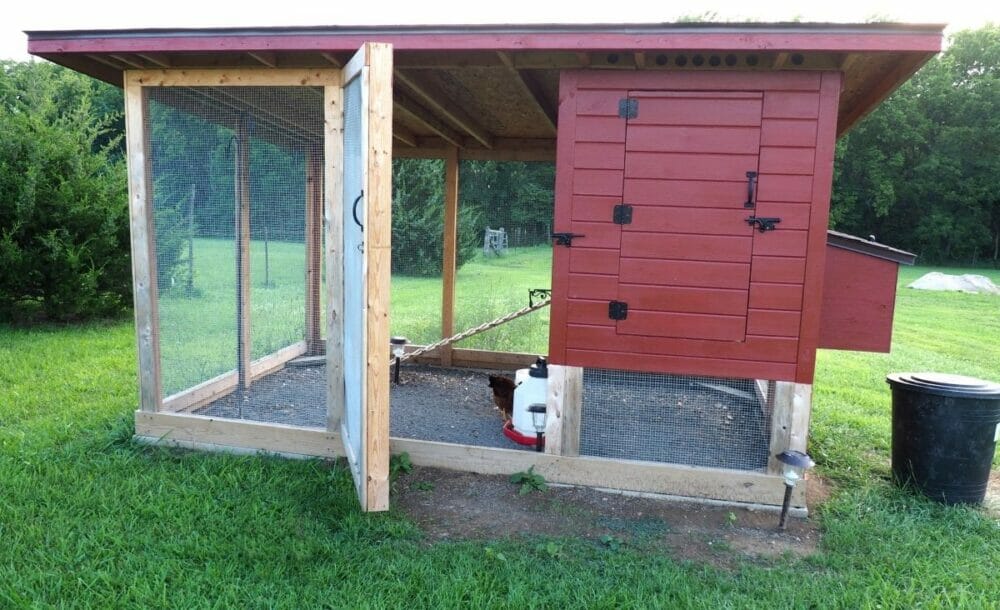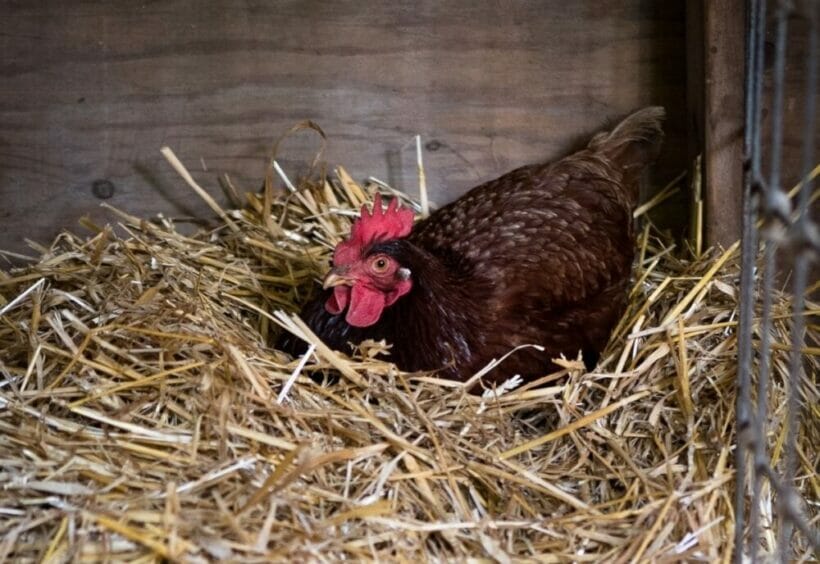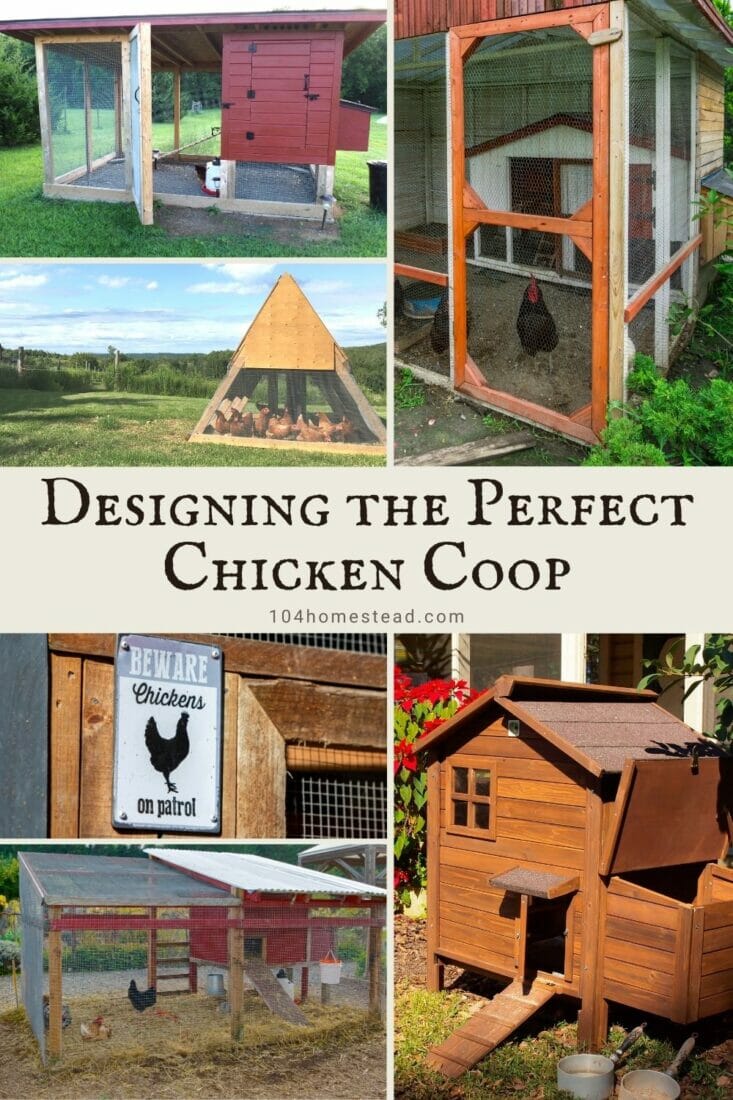Roost to Run: The Elements of Perfect Chicken Coop Design
Discover the art of perfect chicken coop design! From sunlight to security, create a haven for happy hens and bountiful eggs.

More than just a journey, taking on the challenge of raising your own chickens is a delightful treat waiting to happen!
Thinking about getting chickens? Picture a place where your hens will not only be safe, but also happy, healthy, and full of delicious eggs. It is both an art and a science to design the perfect chicken coop. You will be entering a world filled with happy clucks and feeling proud that you have given your chickens the best place to live.
Choosing the Right Location
Finding the right place for your coop is the first thing you need to do to create your chicken-friendly paradise. Being sensitive animals, chickens should have their coop put somewhere that gets a lot of sun and is protected from strong winds. Sometimes some shade is nice in the middle of a hot summer afternoon.
Sunlight is the Best Medicine
Sunlight is important for keeping the chickens warm, keeping them healthy, and making eggs. Pick an area that gets a lot of sunlight during the day. If you live somewhere cold, make sure the coop gets morning sun to keep it warm during the winter.
Windbreak Wonder
No one likes a draft, not even your hens. Put the coop where it will protect the birds from strong winds. This will keep them warm and happy, protecting them from the weather.
Size Matters
When it comes to chicken coops, size matters more than you might think. A cramped space can lead to pecking and other behavioral issues, so it’s crucial to give your chickens room to spread their wings—literally.
Calculating Chicken Square Footage
As a general rule, the coop should have about two to three square feet of space for each chicken. This might seem like a lot, but happy, stress-free chickens are less likely to engage in destructive behaviors. A large coop also lets more air flow, which lowers the risk of respiratory problems.
Don’t Forget the Run
It is fun for chickens to dig and roam. As a general rule, give each chicken at least 8 to 10 square feet in the outdoor run. For their physical and mental health, this outdoor space is very important.
Ventilation is Key
The chickens need fresh air, just like we do. Good ventilation not only helps keep the temperature comfortable, but it also keeps harmful ammonia from chicken droppings from building up.
Windows that Wow
Put in windows that can be opened and shut to control the flow of air. This lets air flow through the coop and lets you control the temperature inside. Having windows that can be opened and closed is very helpful in both hot and cold weather.
Roof Vents for the Win
Don’t forget about the roof! Include openings at the top to let hot air out. This is especially important in warmer places, where the coop can become a sauna if it does not have enough air flow. A cool chicken is a happy chicken!
Nesting Boxes with a View
Chickens need a cozy, out of the way place to lay their eggs because egg-laying is serious business. A big part of making the perfect chicken coop is making sure the nesting boxes are comfortable. You can make your own nesting boxes if you want to save a few bucks.
The Magic Number: One Nesting Box per Three Hens
Chickens like to be with other chickens, but when it comes to laying eggs, they like their own space. Offering one nesting box for every three hens makes sure that all of them have enough space. This stops fights from happening and keeps the eggs clean and safe.
Elevate for Egg-cellent Results
Raising the nesting boxes off the ground will keep animals from sneaking in. Chickens are safer when they can get to their nesting boxes without having to worry about dangers hiding nearby.

Cozy Bedding Choices
Choosing the right bedding for your coop is essential for your chickens’ comfort and wellbeing.
Pine Shavings: The Old Tried-and-True Standard
Pine shavings will make your chicken coop smell great. There is a reason pine shavings have stood the test of time.
Benefits of pine shavings:
- Naturally Eliminates Odors: Pine has a pleasant aroma that helps eliminate coop smells, leaving your chicken habitat smelling clean.
- So Soft and Comfy: Pine shavings are a soft bedding material that makes your hens want to rest and relax.
- Absorbent Power: Pine shavings absorb moisture, keep the coop dry, and minimize the risk of bacterial growth.
Maintenance tips:
- Regular Stirring: Keep the bedding fluffed and comfortable by stirring it regularly.
- Top-Up as Needed: Add fresh pine shavings when necessary to ensure your chickens always have a cozy space.
Sand: A New and Exciting Option
Picture your coop with a sandy beach vibe—introducing sand as a cozy bedding choice for chickens! Sand is gaining popularity among chicken owners for its excellent drainage properties and easy cleaning. It doesn’t clump like traditional bedding, making waste removal a breeze. Plus, chickens love to dust bathe in it, promoting healthy feathers.
Benefits of sand bedding:
- Drainage: Sand lets water drain quickly, which keeps the coop dry and reduces smells.
- Easy Clean-Up: Scoop out soiled sand easily and refresh the coop without hassle.
- Dust Bath Delight: Chickens adore dust bathing in the sand, keeping their feathers clean and free from mites.
Maintenance tips:
- Rake Regularly: Smooth out the sand surface and remove any debris to maintain cleanliness.
- Top-Up as Needed: Add fresh sand periodically to ensure a comfortable and inviting coop.
Deep Litter Method
For a low-maintenance option, consider the deep litter method. Add a layer of straw or wood shavings and let it decompose over time. This creates a natural composting process that keeps the coop fresh and odor-free. Win-win!
Benefits of the deep litter method:
- Improved Coop Insulation: Deep litter naturally composts over time, generating heat, which provides additional warmth for the chickens during colder months and improves the overall insulation of the coop.
- Reduced Odor and Maintenance: Promotes beneficial microbial activity, reducing the need for frequent cleaning.
- Enhanced Soil Fertility: The composted material from the deep litter method can be removed and used as a rich, organic fertilizer for gardens or fields.
Maintenance tips:
- Regular Stirring: Stirring the bedding regularly to prevent the formation of wet or matted areas.
- Top-Up as Needed: Add layers of straw or shavings when necessary to ensure your chickens always have a cozy space.
Roosts: Bedtime Perches
You should give your chickens roosts to sleep on at night. Chickens naturally like to roost, and giving them strong, comfortable perches will help them get a good night’s sleep. Putting the roosts above the nesting boxes will help your hens sleep in the right place.
Security First
Predators are a constant threat to your precious flock, so beefing up security is a must. Your chicken coop should be a stronghold against all threats, from determined raccoons to smart foxes.
Fortify the Foundation
Begin by building a strong base. To keep animals from digging under the coop, dig a trench around it and bury an apron made of hardware cloth. Predators will not be able to dig their way into the coop with this extra layer of defense.
Secure Windows and Doors
Install latches on windows and doors that keep animals out, or cover them with hardware cloth. You should pick latches that are strong and require some dexterity to open because raccoons are known to be good at breaking locks.
Easy Access for You
It should not be hard to clean the coop and gather the eggs. Design your coop with easy access in mind.
Sliding Trays for Effortless Cleaning
To make cleaning easier, put sliding trays under the roosting bars. You can just slide them out, clean up their droppings, and then slide them back in.
Egg-ccessible Egg Collection
Make a separate door or way to get in for collecting eggs. This keeps the nesting area as quiet as possible and makes collecting eggs quick and easy for both you and the hens.
Aesthetics Matter
Who says a chicken coop can’t be stylish? Although functionality is very important, giving your coop a little style can make it stand out in your backyard.
Colorful Coops and Happy Hens
Paint your coop in bright and cheerful colors. Not only does this add personality to your backyard, but it can also lift your own spirits. Happy coop, happy you, and happy hens!
Landscaping Around the Coop
Add some plants to the area around the coop to make it look nice. Not only does this make your backyard look better, but it also gives your chickens more places to hide and find shade.
Frequently Asked Questions
Looking for help to design the perfect chicken coop? Check out Easy Coops for plans that’ll make your feathered friends feel right at home!
If you’ve found value in this blog post and enjoyed reading it, why not share it with your Pinterest community? Pin the image below and spread the love!

Creating the perfect chicken coop is a rewarding project that significantly impacts your chickens’ health, happiness, and egg production. By focusing on space, safety, comfort, and maintenance, you can design a coop that not only meets your flock’s needs but also makes your job as a poultry keeper more manageable and enjoyable.
What challenges have you faced in designing or updating your chicken coop, and how did you overcome them?
